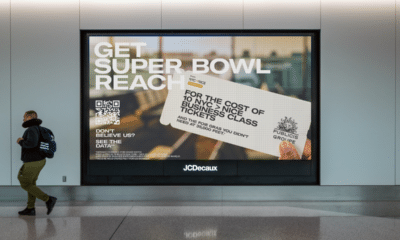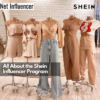Agency
Performance Over Popularity: Inside Virality Boost’s Influencer Marketing Strategy
After managing over 70 affiliate programs and influencer campaigns for major brands including Ann Taylor, LOFT, Big Lots, and Virgin Airlines, marketing veteran Kim Murray realized that businesses needed a different approach to influencer marketing—one that prioritizes performance over popularity.
“I really felt that influencer campaigns were being mismanaged,” Kim explains. “Brands really can’t afford to run influencers at $5,000 for them to create one organic post. So there’s a real disconnect between influencers and a business outcome.”
In 2024, she launched Virality Boost, an agency that transforms influencers into content distributors rather than content creators, running campaigns with up to 50 influencers simultaneously to amplify brand messaging at scale. To date, the Orlando-based company has overseen over 8,000 influencer campaigns focused on driving measurable traffic and sales, rather than engagement metrics.
“We are focused on influencer content distribution,” Kim clarifies. “We provide them with their copy and creatives. And then we’re very much focused on the overall performance from a traffic and sales perspective.”
The Core Value Proposition
Virality Boost’s value proposition centers on three key elements: content control, influencer scale, and performance measurement.
First, by controlling the message and creative assets, the company ensures brand consistency while leveraging the influencer’s audience trust. “User-generated content (UGC) is focused on more entertainment value and certainly the testimonial part of it,” Kim notes. “But at the end of the day, we want to be able to control the message, we want to be able to control the creative, and then we want to use the influencer as a social proof.”
Second, instead of betting on a few high-profile influencers, Virality Boost runs multiple concurrent campaigns. “We can run anywhere from three to 50 influencers in a single campaign,” Kim explains, adding that this approach allows for real-time performance comparison and budget optimization, directing more resources toward top-performing influencers and content.
Third, the company measures success strictly based on business metrics. “We’re figuring out the average order value for the brand and the conversion rate, and then we’re trying to back out to figure out how much traffic they need to make an ROI on their campaigns,” Kim says.
Leveraging Editorial Credibility
One of Virality Boost’s distinctive strategies involves creating a “credibility stack” by partnering with premium editorials to secure brand features in listicles or dedicated articles, which are then distributed by their network of influencers.
“We partner with premium editorials, we’ll get the brand listed on a listicle or have a dedicated article written about the brand, and then our influencers will distribute that article,” Kim states. “It’s like taking credibility, trust, and social proof and putting that into its own strategy with influencers.”
As Kim explains, this method creates multiple layers of credibility for brands: first, the authority of established publications, and second, the reach and relatability of influencers. For newer brands, this especially helps build trust quickly by leveraging existing credibility sources rather than starting from scratch.
“We have partnered with Brit + Co, where they’ll write a very strong listicle and then we’ll drive traffic into the listicle,” Kim shares. “Many of our creatives are more focused on, like, ‘Hey, featured on.’ So it gives another layer of credibility when you’ve got social media with so much misinformation.”
The Fortunoff Backyard Store Case Study
For Fortunoff Backyard Store, one of Virality Boost’s ongoing clients, the results demonstrate the effectiveness of their approach. “They’ve been running campaigns for eight months with me every single month. And we see a direct correlation between running influencer and the year-over-year growth in sales,” Kim notes.
Kim shares that a typical Virality Boost campaign generates between 100,000 and 200,000 in reach, depending on the size of the campaign and budget, creating multiple touchpoints in the customer journey. While this reach matters, she emphasizes that it’s the conversion of that awareness into measurable business results that counts.
“That is a very big deal for a brand because of how influencer marketing creates awareness. When users see content from an influencer, they have multiple pathways to engage with the brand: they can save the link for later, search for the brand directly on Google, visit the brand’s website in another tab, or look for coupons if they’re interested in what they saw. They might even follow the brand’s social media accounts,” Kim explains. “So when you reach 200,000+ people through an influencer, you’re actually creating all these different branches of potential customer engagement.”
The Influencer Selection Method
Virality Boost’s metrics-based approach extends to influencer selection. Unlike most agencies that let brands choose influencers based on aesthetic alignment or follower count, Kim’s team selects based on proven performance metrics.
“Brands will ask, ‘Can I pick the influencer?’ And the answer is no, because they choose influencers on these vanity metrics,” Kim explains. “Because we’ve run hundreds of influencers, we see the performance that they have and then we’re able to choose the best performing.”
She notes that this methodology often yields unexpected results. In a 50-influencer campaign for an outdoor equipment company, Kim discovered that lifestyle influencers frequently outperformed niche-specific content creators.
“We found out that it was a lot of lifestyle influencers that were influencing the sale more so than the relevant, highly vertical, specific influencer,” she reveals. “That’s attributed to more UGC content because they’re out hiking and tenting, and people follow them because followers find them inspiring for that reason. Not necessarily ready to buy.”
The Scale Strategy: Testing and Optimization
Kim’s approach to influencer marketing contradicts the common practice of cautious testing with a few expensive creators. Instead, she advocates for starting with multiple lower-cost influencers and systematically scaling based on performance data.
“Being cautious about influencers, running two to three influencers paying a high price per influencer, paying for the right to the influencer’s content, for most brands, they’re going from a brand awareness model into being responsible for their budget and getting a return on investment now more than ever,” Kim says. “You have to start looking at scale.”
Her recommended strategy involves a continuous cycle of testing and optimization: “How are you going to take influencer marketing and scale it into 10 influencers a month and then take the top performing of those 10 and then add 10 more? Bring out those top performers, keep adding budget, and start scaling the brand.”
Solving the Attribution Puzzle
The attribution challenge remains one of the biggest hurdles in influencer marketing, but Kim sees it as a solvable problem rather than an inherent limitation.
“This is an attribution game,” Kim explains. “There are going to be different problems that brands may have. One is running too few influencers and not boosting properly.”
She points out that modern customer purchase paths rarely follow straight lines: “You’re going to see a new influencer boosted ad for a bracelet and save that link. You’ll receive a retargeting email offering 10% off the bracelet. So you think, ‘I’ll go ahead and buy it now.’ But then, maybe after going back to the site to get that 10% off, you discover you can get 3% cash back from Rakuten, Capital One Shopping, or Honey – so now you can stack offers, get 10% off plus 3% cash back. Which offer combination will you choose, and what ultimately motivates your purchase? For brands, the challenge becomes how they budget for such a complex customer journey and determining which touchpoint should be credited for the final sale.”
This complexity, she adds, means attribution is often assigned to the last touchpoint, even when influencer content initiates the customer journey. Kim recommends examining year-over-year revenue growth and overall channel program performance, especially your affiliate channel, rather than looking for direct attribution metrics alone.
“When you start talking to VPs, CMOs, and CROs, they understand the whole marketing mix,” she says. “You’re driving demand into their channel, but the attribution is going in different ways.”
Platform Development and Local Marketing
Kim is currently focused on creating a more streamlined platform to optimize Virality Boost’s services.
“Our main goal is setting up a platform to make this more streamlined,” she says. “Now that we’ve run millions in traffic, reach, and impressions, we know what we need to optimize to address attribution issues and automate things more productively, while staying focused on the business outcome.”
Kim also sees expanded opportunities for influencer content distribution beyond e-commerce, particularly in regional and local markets. “Content distribution will be much bigger in helping provide opportunities for influencer audiences on a DMA or zip code level. So you could be looking at home services, upcoming events, attractions, etc. I think influencers as content distributors are underutilized in those three key areas.”
As for the broader creator economy, Kim advocates for a more balanced distribution of value. “The creator economy is the agencies making money, the platforms creating the tools, and the sub-affiliate networks. But the creators are getting a very small slice of a multi-billion-dollar industry.”
Her advice to brands looking to improve their influencer strategy is to combine approaches for maximum impact. “If you run a UGC campaign and we paid $5k-10k for an influencer, you can have Virality Boost come in with 50 influencers to share that campaign. Then, you’re starting to tap into different audiences, and so many brands will go in and choose the influencer that aligns most closely with their brand. We’re trying to choose the influencers where you’ll find new potential consumers.”
“You have to be thinking about advanced full-funnel strategies to drive meaningful business outcomes for the brand from top to bottom,” Kim concludes. “Market share, new customer demand, awareness—you need to consider all these elements together, not in isolation.”





















